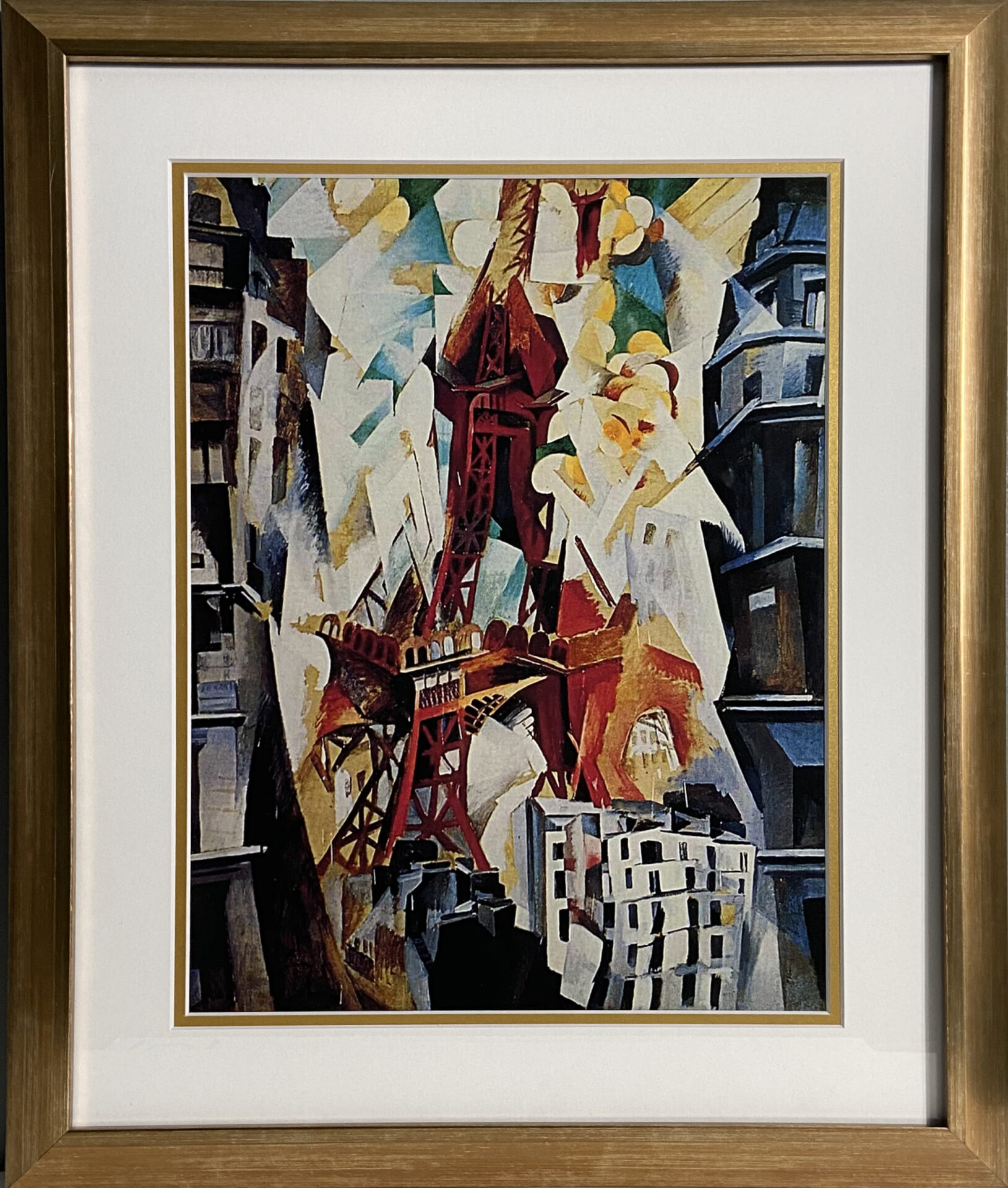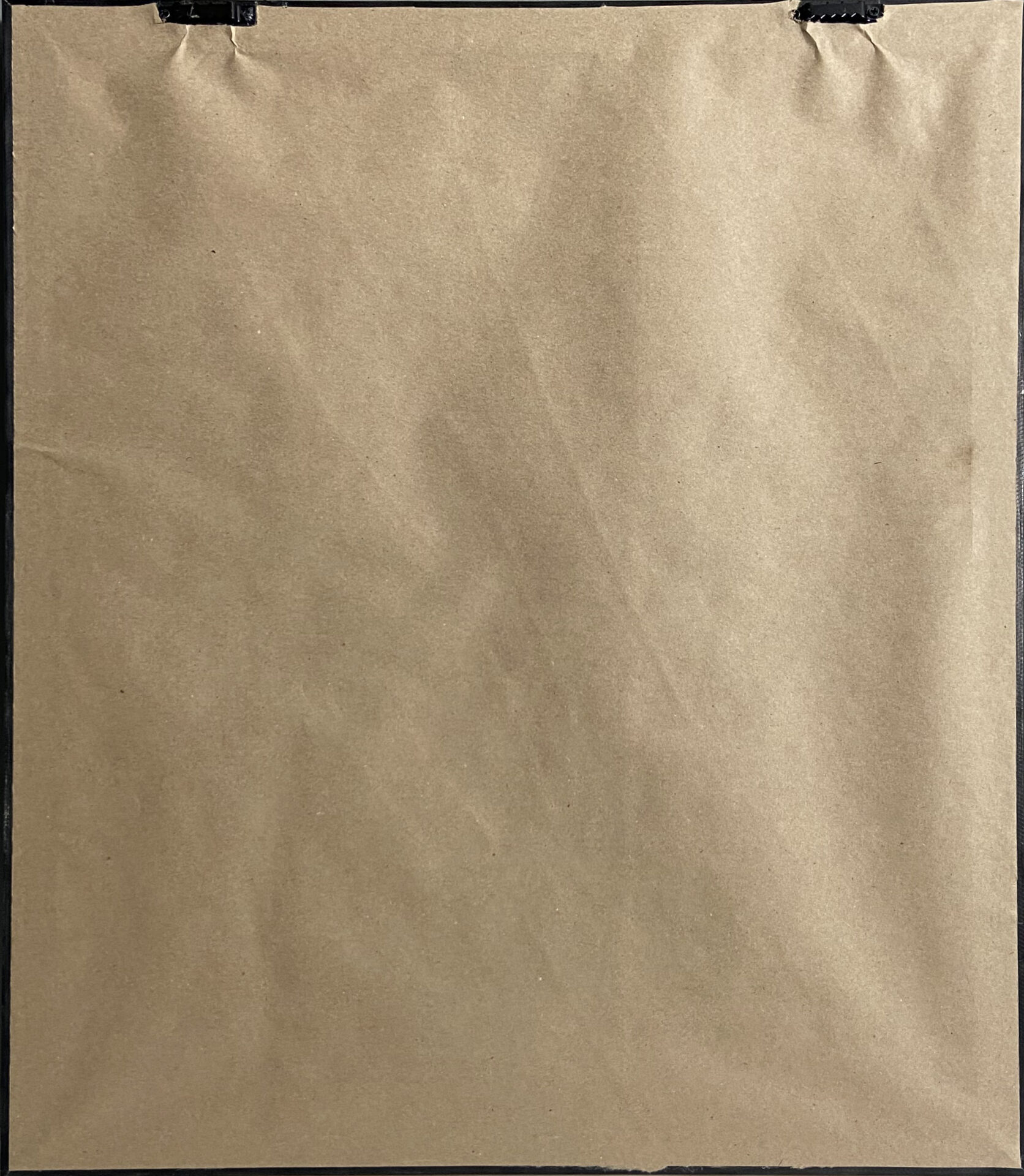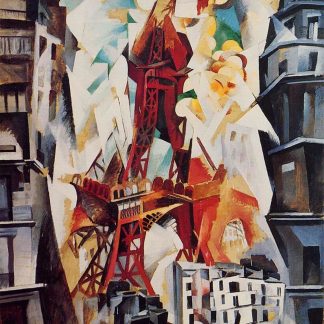Description
When Robert Delaunay began painting Champs de Mars: The Red Tower in 1911, the Eiffel Tower was only 22 years old. Therefore, it was still considered a new addition to the skyline of Paris. It was completed by the “Magician of Iron”, Gustave Eiffel, in 1889, and was to be revealed to the world at the Exposition Universelle, or World’s Fair. The Eiffel Tower was immediately striking as the world’s tallest structure, a title it held for 41 years until 1930. It is constructed of wrought iron and stands 1063 feet above the city. It was also a shocking example of the rising prominence of Realist, Rationalist, and Functionalist architecture that was spreading throughout the world. No longer was a building’s form and function hidden behind decorative façades. Now its structural integrity could be boldly displayed as part of its overall appearance. The Eiffel Tower was a massive symbol of the rapidly urbanized and industrialized society of Paris.
Robert Delaunay’s Champs de Mars: The Red Tower may depict a 19th century cityscape, but not in the traditional 19th century style of painting. His painting is thoroughly Modernist and rejects conservative and realistic depictions of the Tower. He does not aim to portray it as the eye sees it, but to depict its essence, character, and form. It is a painting rejecting linear perspective and realistic shading and is not photographic in any sense. It embraces the dissection of forms, shapes, and colors by holding to most of the tenants of Cubism. This is an art form proudly supported by famous artists like Pablo Picasso and Georges Braque. However, Robert Delaunay is not simply a follower of Cubism. He embraces dramatic colors following the school of Orphism, which consists of fantastically vibrant colors. Cubism, however, tends to follow a more somber color palette of browns and blacks. Orphism holds hands with Cubism but is not married to it.







Reviews
There are no reviews yet.